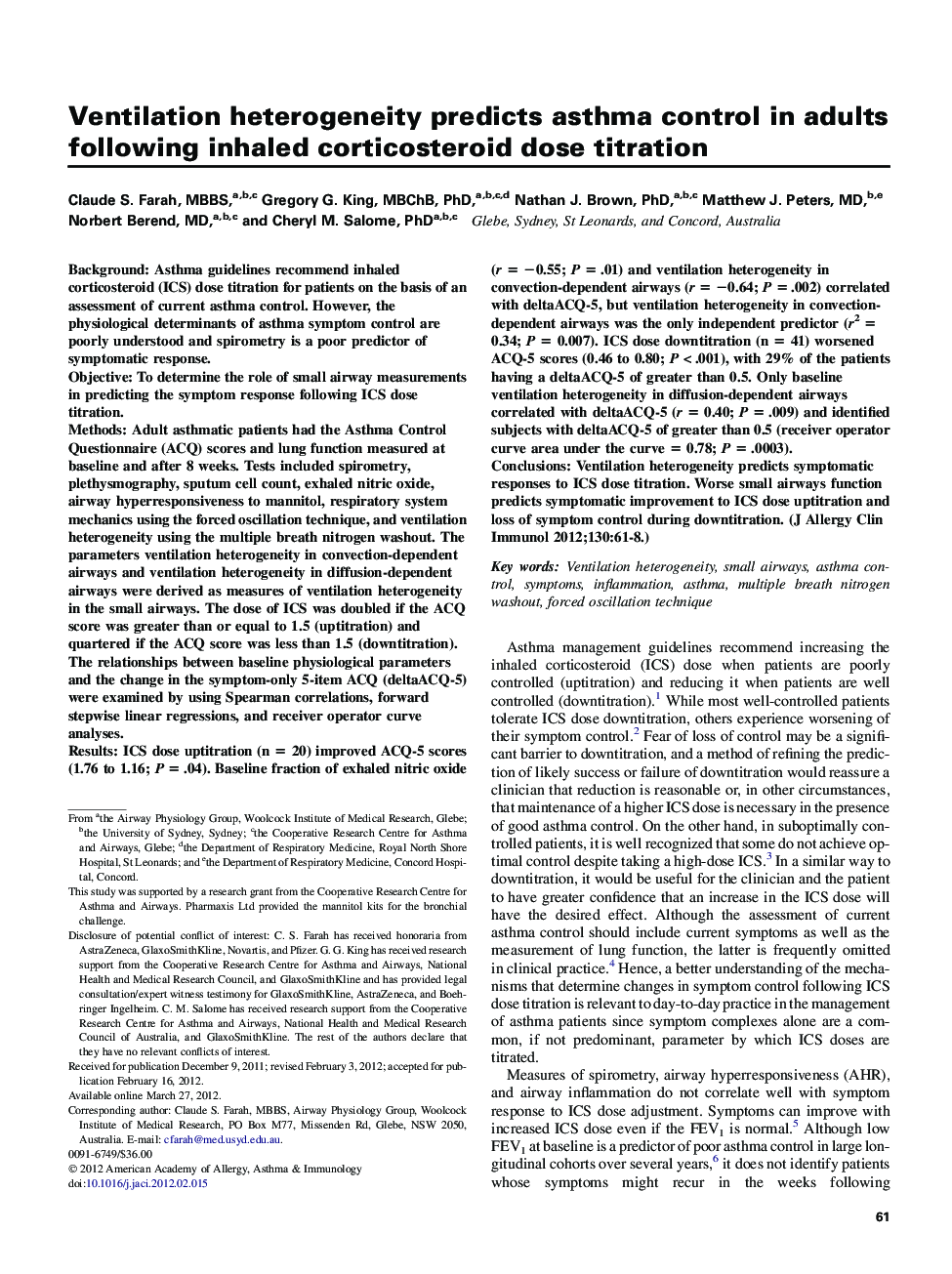| Article ID | Journal | Published Year | Pages | File Type |
|---|---|---|---|---|
| 3198662 | Journal of Allergy and Clinical Immunology | 2012 | 8 Pages |
BackgroundAsthma guidelines recommend inhaled corticosteroid (ICS) dose titration for patients on the basis of an assessment of current asthma control. However, the physiological determinants of asthma symptom control are poorly understood and spirometry is a poor predictor of symptomatic response.ObjectiveTo determine the role of small airway measurements in predicting the symptom response following ICS dose titration.MethodsAdult asthmatic patients had the Asthma Control Questionnaire (ACQ) scores and lung function measured at baseline and after 8 weeks. Tests included spirometry, plethysmography, sputum cell count, exhaled nitric oxide, airway hyperresponsiveness to mannitol, respiratory system mechanics using the forced oscillation technique, and ventilation heterogeneity using the multiple breath nitrogen washout. The parameters ventilation heterogeneity in convection-dependent airways and ventilation heterogeneity in diffusion-dependent airways were derived as measures of ventilation heterogeneity in the small airways. The dose of ICS was doubled if the ACQ score was greater than or equal to 1.5 (uptitration) and quartered if the ACQ score was less than 1.5 (downtitration). The relationships between baseline physiological parameters and the change in the symptom-only 5-item ACQ (deltaACQ-5) were examined by using Spearman correlations, forward stepwise linear regressions, and receiver operator curve analyses.ResultsICS dose uptitration (n = 20) improved ACQ-5 scores (1.76 to 1.16; P = .04). Baseline fraction of exhaled nitric oxide (r = −0.55; P = .01) and ventilation heterogeneity in convection-dependent airways (r = −0.64; P = .002) correlated with deltaACQ-5, but ventilation heterogeneity in convection-dependent airways was the only independent predictor (r2 = 0.34; P = 0.007). ICS dose downtitration (n = 41) worsened ACQ-5 scores (0.46 to 0.80; P < .001), with 29% of the patients having a deltaACQ-5 of greater than 0.5. Only baseline ventilation heterogeneity in diffusion-dependent airways correlated with deltaACQ-5 (r = 0.40; P = .009) and identified subjects with deltaACQ-5 of greater than 0.5 (receiver operator curve area under the curve = 0.78; P = .0003).ConclusionsVentilation heterogeneity predicts symptomatic responses to ICS dose titration. Worse small airways function predicts symptomatic improvement to ICS dose uptitration and loss of symptom control during downtitration.
